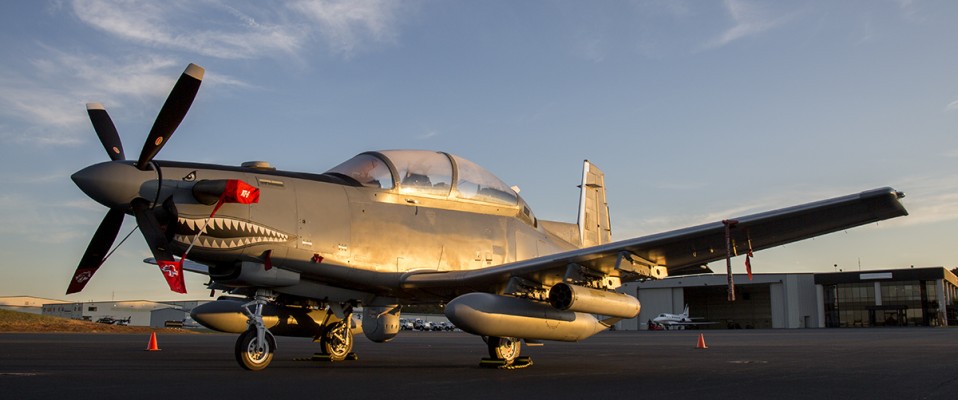Inside the Capabilities of Textron’s ISR/Light-Attack AT-6E Wolverine
Report by Todd Miller
Photos by Todd Miller (unless noted)
August 2, 2020
As has been widely reported, the conclusion of the Light Attack Experiment (LAE) resulted in orders for only a couple each of Sierra Nevada/Embraer’s A-29 Super Tucanos and Textron Aviation Defense’s Beechcraft AT-6 Wolverines. However, the USAF decision to be the launch customer of the AT-6E — AT-6“E” is the formal USAF designation — is a significant takeaway for Textron. The USAF acquisition of the AT-6E aircraft clears the path for foreign adoption of the platform through the Foreign Military Sales (FMS) program as well as via Direct Commercial Sales (DCS). In any case, the AT-6E’s successful completion of both Light Attack Experiment (LAE) Phases I & II — including a Forward Arming and Refueling Point (FARP) and austere field landing demonstrations – makes it a compelling addition to the export market.
Per Textron Aviation Defense, the AT-6E is an adaptable, sustainable and affordable platform capable of operations in austere environments with close air support (CAS), armed intelligence, surveillance, and reconnaissance (ISR), strike coordination and reconnaissance (SCAR), forward air control (airborne) (FAC(A)) and insertion/extraction escort missions. I am fortunate to get the opportunity to experience what that “looks like.”
Out on the ramp of the civilian airfield, the AT-6E looks at home. Sized right with an efficient 4-bladed prop, it blends into the line of general aviation aircraft — in the same way a purpose-built racecar blends into a parking lot of passenger cars. As you get closer, the nature of the AT-6E is clear. The snarl gracing the 1600 shp Pratt & Whitney powered turboprop screams bite. The snarl is backed up by LAU-131 rocket pods and external fuel tanks hanging from four of the aircraft’s seven hardpoints (one occupied by the Wescam L3 MX-15D EO/IR Sensor). High visibility tandem seating, heads up display and zero-zero Martin Baker ejection seats leave no doubt — the AT-6E offers more than the standard turboprop’s “business proposition.”
My attention is drawn to Textron Aviation Defense’s Cessna Grand Caravan parked nearby. It is noted that the Grand Caravan has been configured to transport an additional inventory of ordnance for the AT-6E because all customer aircraft demos and flight reviews are conducted with mission-representative weapons load outs. The message is loud and clear. A handful of correctly configured aircraft (AT-6E and Grand Caravan) could readily and discretely deploy to a local general aviation field, a very private austere airstrip or even a suitable field. With just a handful of ground personnel, the platforms are more than capable to deploy lethal ISR/COIN/Precision Attack. I briefly ponder that the airfield launch today could as easily take place from a field in the dark of night in proximity to an area of interest.
I am fortunate to fly with USAF Col. Tom “Gumby” Webster (Ret.), the Regional Director of Textron Aviation Defense aircraft sales for Asia-Pacific. With 3,000 hours in F-16s, Webster is a COIN/CAS/Precision Attack expert. An honor graduate of the USAF Weapons school, Webster spent significant career time working closely with Army command addressing the airborne, ground (JTAC) and C2 aspects of the CAS mission. On the ground, in the air — weapons on target, danger close — Webster is our man.
The airspace available for the demonstration flight limits our speed to 250 knots and altitude up to 12,000 ft. Not what one would generally experience over hostile area — but certainly more than enough to experience the AT-6E in action. Briefing is expansive as Webster orients me to the Wolverine’s CMC glass cockpit with three multi-function displays, the F-16-derived HOTAS, A-10C mission computer, ejection seat procedures, flight controls and environmental systems. The aircraft features an impressive array of communication capabilities with ARC-210 radios/VHF/UHF/AES Encryption/SATCOM/Iridium Cell Satellite/AERONet/Full motion rover video/GPS precision approach and more.
Following a brief ramp hold, Webster pushes the throttles forward and we are quickly airborne and climbing. The unobstructed visibility strikes me as we bank across the terrain below. While en route, Webster demonstrates navigation aids (i.e., steer points, mission points, etc.) and the digital stores management systems. The inherent flexibility of the three MFDs provide a wide variety of information to enable a high level of situational awareness.
Flying the aircraft is not difficult. The AT-6E shares a high degree of commonality with the widely utilized T-6A Texan used by the USAF. Since 2001, aviators across the USAF, USN, USMC, USA and USCG have trained in the T-6. Nearly a dozen nations worldwide operate their own T-6 fleets and every year pilots from more than 40 countries graduate from T-6 training via the NATO Flight Training program in Canada, the Euro NATO Joint Jet Pilot Training Program (ENJJPT) at Sheppard AFB, and the U.S. Air Force’s Aviation Leadership Program at Columbus AFB.
Not to be mistaken, the PT6A-68D featured in the AT-6E offers a significant increase in power (1600 shp vs the 1100 shp of the T-6A), structural enhancements and defensive, sensor, communications and weapons capabilities — and more. Textron’s 1,000 T-6 variants have logged more than 3.3 million flight hours worldwide across different environments. With roughly 85% commonality between the two airframes, it’s not hard to see the value of the number of airframes in the market with support from Textron’s global service network.
Webster activates the MX-15D EO/IR imaging sensor and we begin to move through sensor capabilities. The eye in the sky is now watching, watching closely. The broad communications suite facilitates both classified and unclassified systems. The ability to turn the aircraft into what is essentially a mobile hotspot complements communications via encrypted military channels and interfaces seamlessly with military/paramilitary/civilian agencies on the ground using the “ATAK“ (Android Tactical Assault Kit).
The AT-6E proved its ability to utilize the Air Force-developed Airborne Extensible Relay Over-the-Horizon Network known as AEROnet during the Light Attack experiment. This air-to-air and air-to-ground radio system ensures interoperability, enabling militaries to share video, voice and chat communications and empowering them with command and control. None of this is particularly surprising given Textron’s expertise with ISR systems integration on platforms like the MC-12, Scorpion and others.
Within 25 minutes of flying we arrive at our designated area of interest. Thoughts of survivability come to mind as we provide overwatch in permissive airspace (airspace free of hostile airpower and/or sophisticated integrated air defense systems (IADS)). Webster tells me that a combination of tactics, the low heat signature of the turboprop, the AT-6E’s self-protection systems (ALQ-213, AAR-47), and the airplane’s fully aerobatic maneuverability, even when carrying external stores, provide a high degree of survivability – much higher than most anticipate.
In the air, one can anticipate the AT-6E will feed streaming video and ISR data from the aircraft to ground operators (military or civilian), providing high situational awareness with immediate air support overhead. Comms crackle, Webster relays target information. The MX-15 is slaved to the target and marked for what will unfold as a series of punishing attacks. Target confirmed and engagement authority received.
No more idle banter about the platform, Webster’s demeanor shifts as he prepares to unleash a finely honed choreography of tactics. Unguided 2.75 Hydra rockets selected and armed. Webster comes off a turn and rolls the Wolverine in on target —with the sun at our back. The nose drops to the optimal attack attitude and throttles are adjusted. Webster aligns the weapons delivery cues on the target — and the sticks fly. The computer tallies the number of rockets on target, we execute a 2-3G pullout and climb back to altitude. Webster indicates that the attack profiles and weapons runs are like those flown in fast jets. The 300+ knots of the AT-6E ensure more time on the attack run and result in a mildly lower kinetic energy of the ordnance than that of 4th or 5th generation fighters. The outcome is the same — target neutralized — but, in this case, at a fraction of the cost of high-end fighters.
The AT-6E handles predictably throughout the flight. I am somewhat surprised that the AT-6E maintains a solid roll rate and g capability, even when carrying significant stores. The lower cruise and loiter speeds mean a 4-6.5 G maneuver changes the aircraft’s direction quickly. The straightforward handling characteristics allow Webster and I to focus on the issue at hand — the next weapons run.
With the ease of a combat veteran at home in his environment and at one with his aircraft, Webster demonstrates various attack profiles utilized by the variety of weapons available on the AT-6E — guided rockets, unguided bombs, a Hellfire (AGM-114) launch, guns. Like your favorite video platform, the AT-6E unleashes its fury as if with unlimited ordnance. I have little trouble imagining the target below reduced to a smoldering hole in the ground – and I reach to increase the oxygen and airflow.
In a continuous, fluid series of attacks — with no rest for the target — Webster rolls in immediately for a diving strafe pass. I imagine the .50 cal HMP-400 buzzing as shells fill the air. Imagery from Webster’s heads-up display (HUD) is projected on one of my MFDs so I can follow the execution of the attack. The computer scores the hit count, shells on target with kinetic effects left to my imagination.
Pilots understand the challenges of hitting small moving targets with gun attacks that put an attacking aircraft near the ground and potentially deadly return fire in the form of SMARMS and MANPADS. Much preferred, perhaps, an attack with precision munitions from the relative safety of distance and altitude. Precision attack typically means targets never see it coming and collateral damage is limited. The AT-6E has the flexibility to move seamlessly between scenarios, perform capably in challenging environments all while providing effective protection for the warfighter’s time in harm’s way.
Webster offers up the controls and I roll the aircraft in on target for a gun attack. The AT-6E is stable and easy to fly — but I am challenged to put shells on target. A true gentleman, Webster has kind words. With nothing more to prove, we level at altitude and move back to overwatch.
‘Comms crackle’ and we fly west to surveille another location. During the few moments of transit, I consider the scenario. With no IADS to confront, we operate with relative impunity. In the case where hostile air could threaten, the unseen but present CAP of very effective F-15s/F-16s/FA-18s and stealthy F-35s/F-22s provides cover.
The situation on the ground becomes clear, a violent extremist group is meeting in the target building identified below. At altitude and approaching from over a mountainous ridge, the targeted remain unaware of their immediate danger. We release a 500-lb. enhanced Paveway II GPS/laser guided bomb (GBU-49). Webster rolls the aircraft to maintain eyes on target for weapons impact. Despite the assurance of a low heat signature and effective defensive systems, my eyes scan the ground for movement, a hostile that steps out from the shadow of a tree, a flash indicating a MANPADS launch … nothing.
The HUD counts down, 3, 2, 1… Good Hit. I imagine a dark cloud billowing from the target. Within seconds a handful of insurgents emerge from the debris and attempt to make their escape. With authority, Webster pulls on the control stick. The 4G turn seems to literally spin the Wolverine 180 degrees on its wingtip and within seconds we roll in on the remaining insurgents. In real time, targets neutralized.
The aircraft settles into cruise at altitude as we activate navigation aids and head to a nearby field for a simulated instrument approach, and then back to point of origin. Upon landing, the AT-6E indicated about 750 lbs of fuel burned. That is an impressively low fuel burn considering ground run, taxi, ramp hold and 1 hour and 45 minutes in the air below 12,000 ft.
While the aircraft clearly has an alternate flight window to a jet attack aircraft, it is at home in the prescribed environment and on task. The AT-6E Wolverine’s mature systems (ISR/Communications/Weapons/Self-protection) clearly establish that it is a fully militarized attack aircraft — light. With the capability to operate from austere environments, the AT-6E adds tremendous operational flexibility for both military and/or civilian authorities.
I require no further convincing. This Wolverine is capable and — in the right hands — lethal. As I walk across the ramp, I turn to take a final look at the AT-6E. There is no need to wipe the snarl off that face, it belongs right where it is.
The author expresses gratitude to the team at Textron Aviation Defense, specifically to USAF Col. Tom “Gumby” Webster (Ret.), and Sylvia Pierson, Director of Communications. An exceptional team of professionals across the board. No austere operations took place during this flight. Images of austere operations courtesy Textron Aviation Defense – Greg L. Davis or as noted.
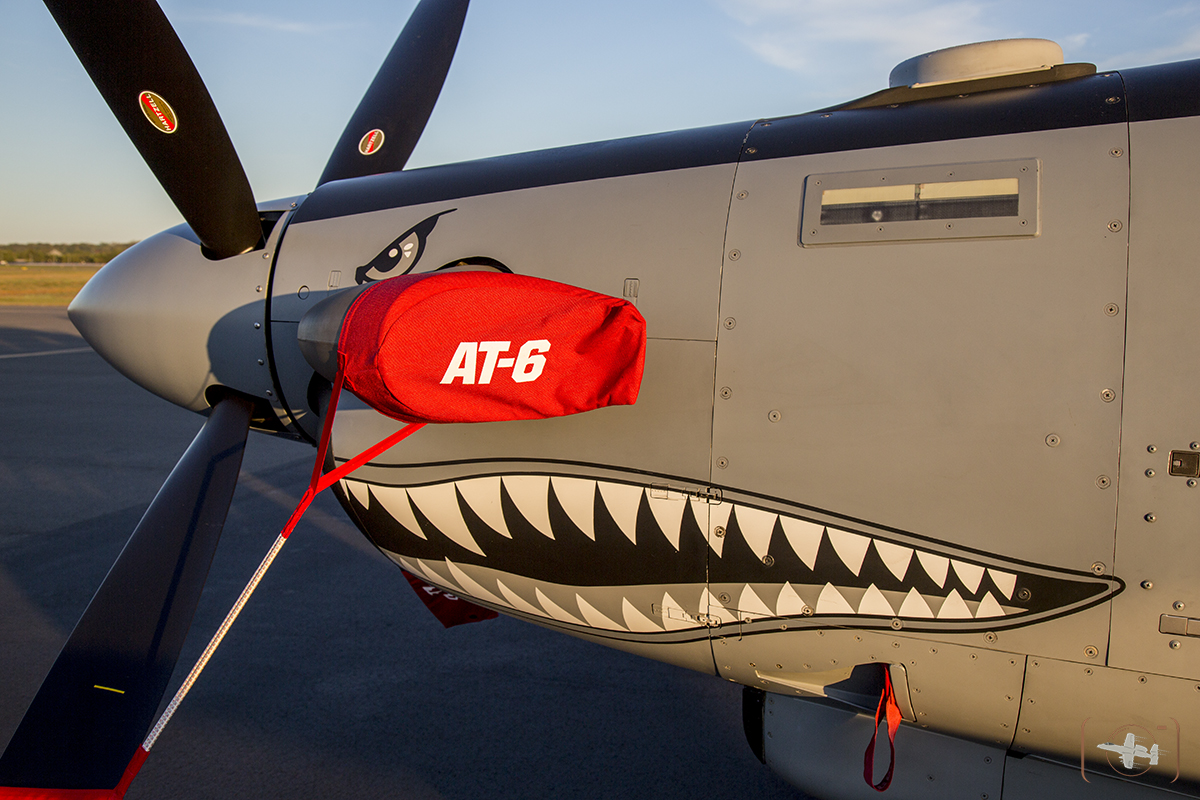
Attitude, by the Textron Aviation Defense-Beechcraft AT-6E Wolverine.
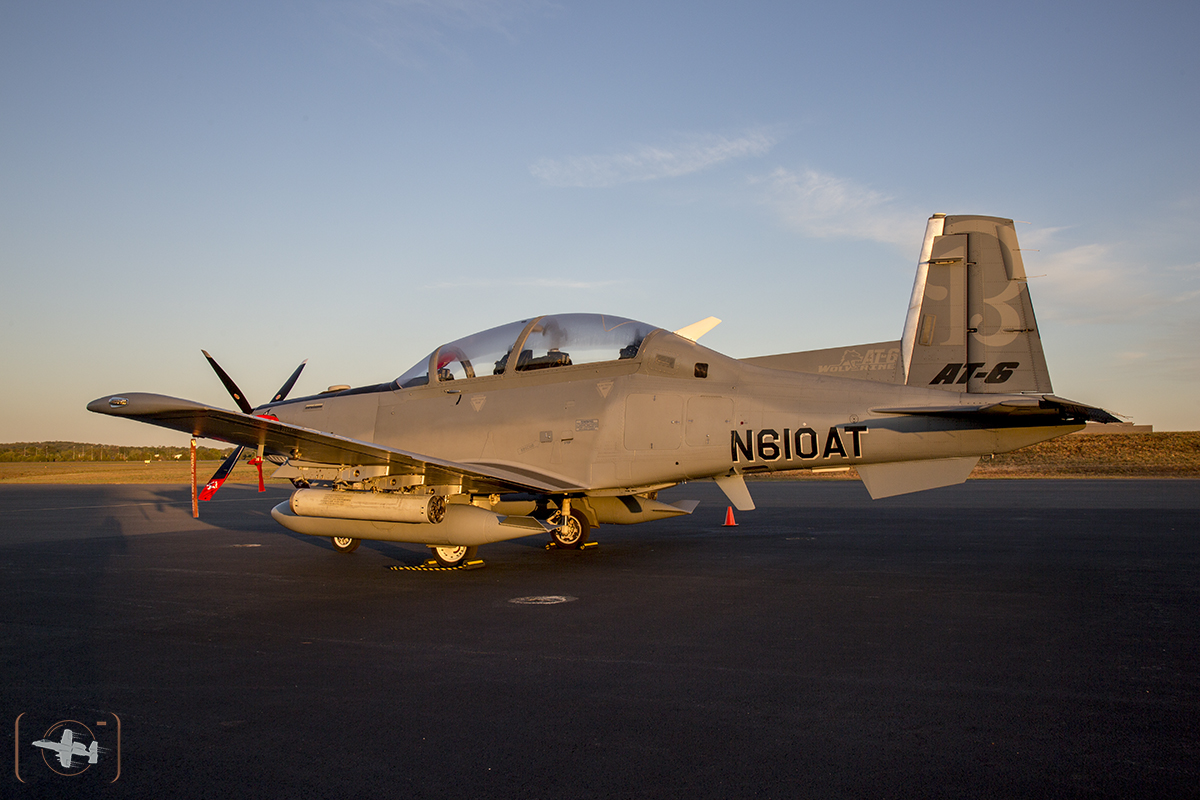
The waking of the AT-6E Wolverine
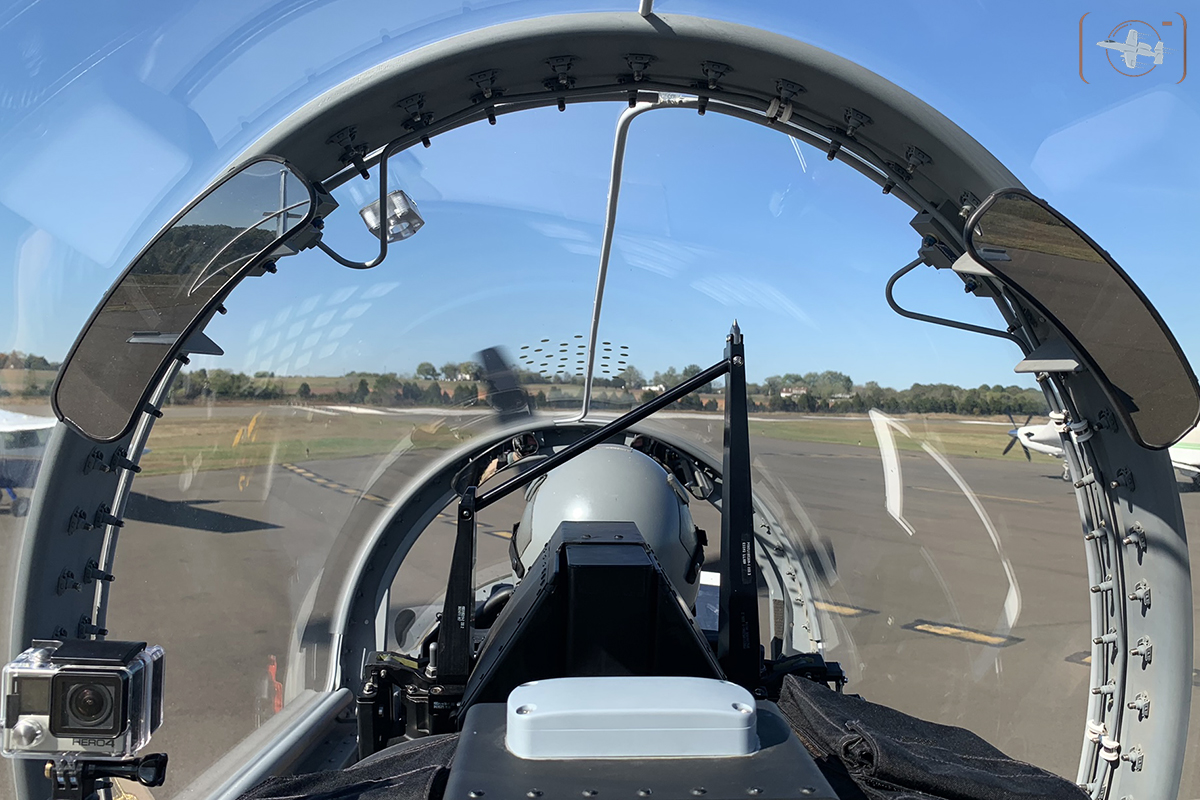
In the Cockpit of the Textron AT-6E Wolverine on the way to experience ISR with some “precision attack” attitude.
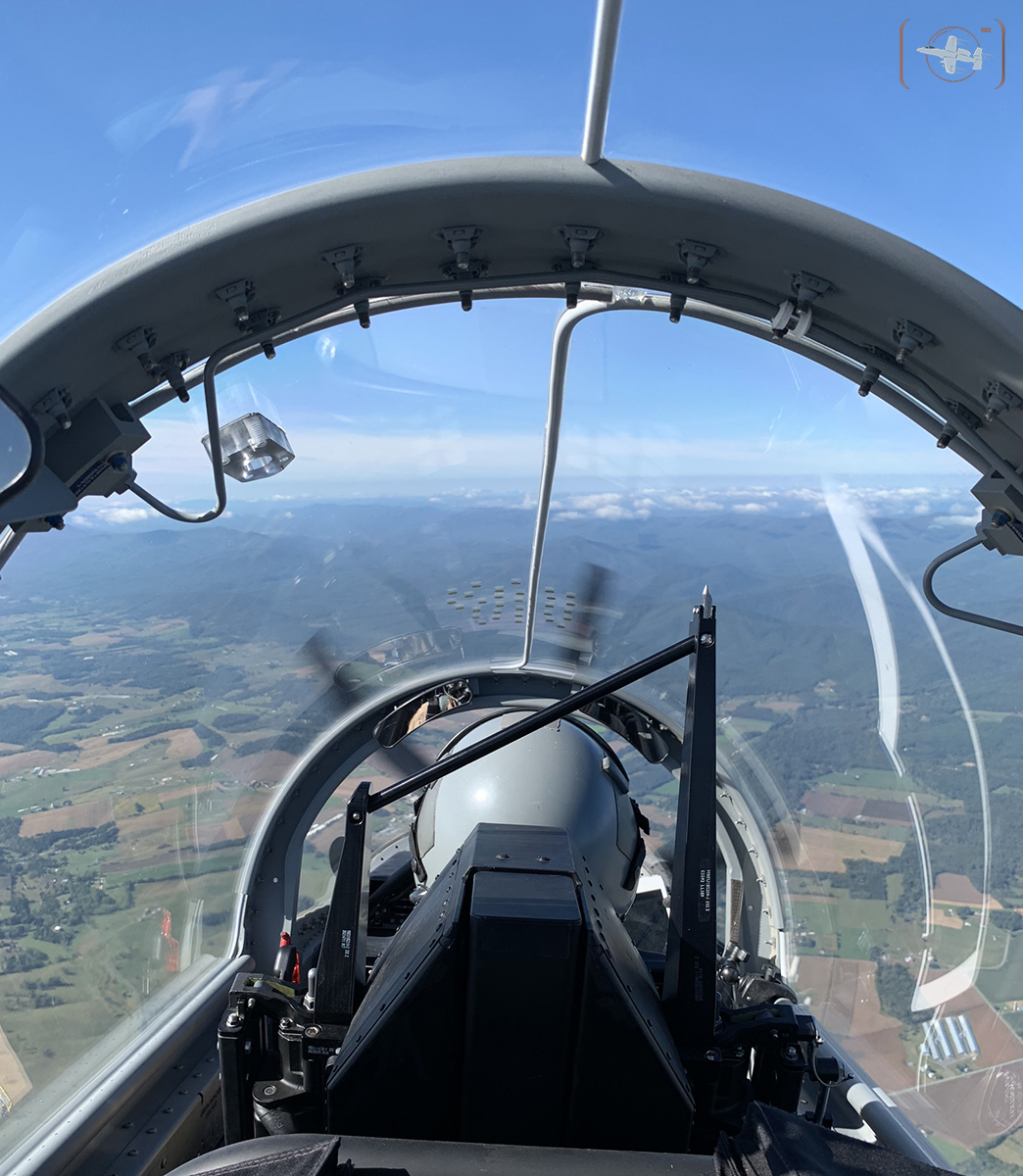
The AT-6E Wolverine offers an exceptional visibility for ISR, CAS, COIN and Light Attack missions.
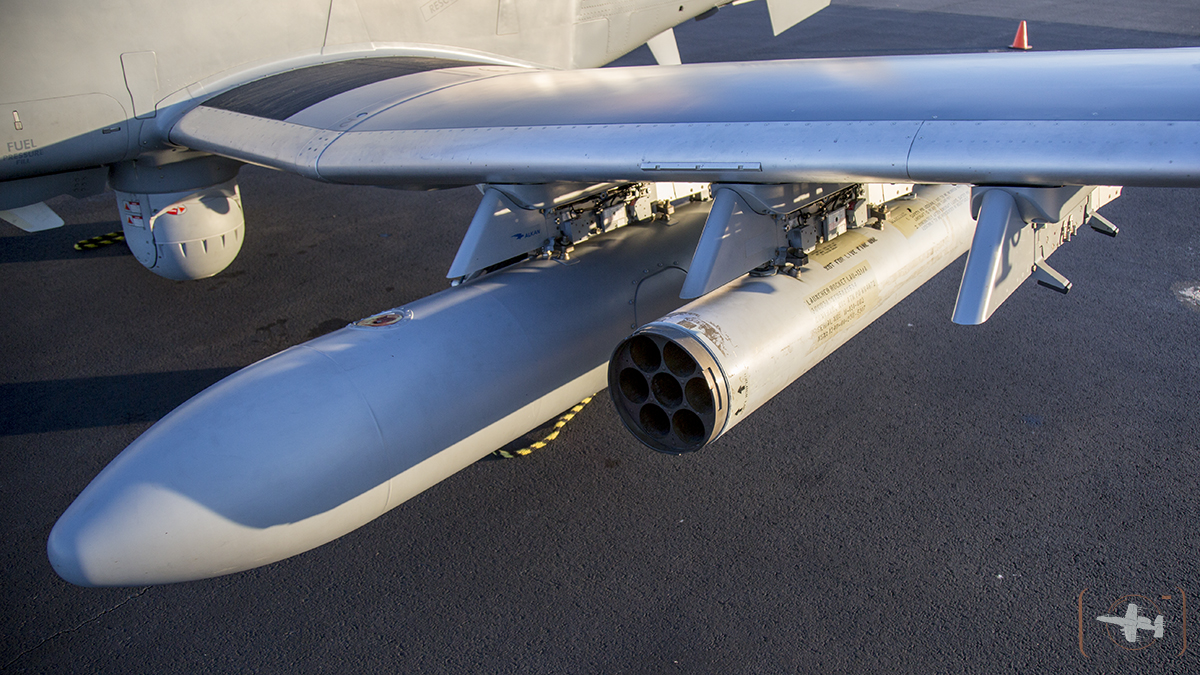
AT-6E Wolverine displays Wescam MX-15D, Auxiliary fuel and LAU-131 Hydra Rocket pods.
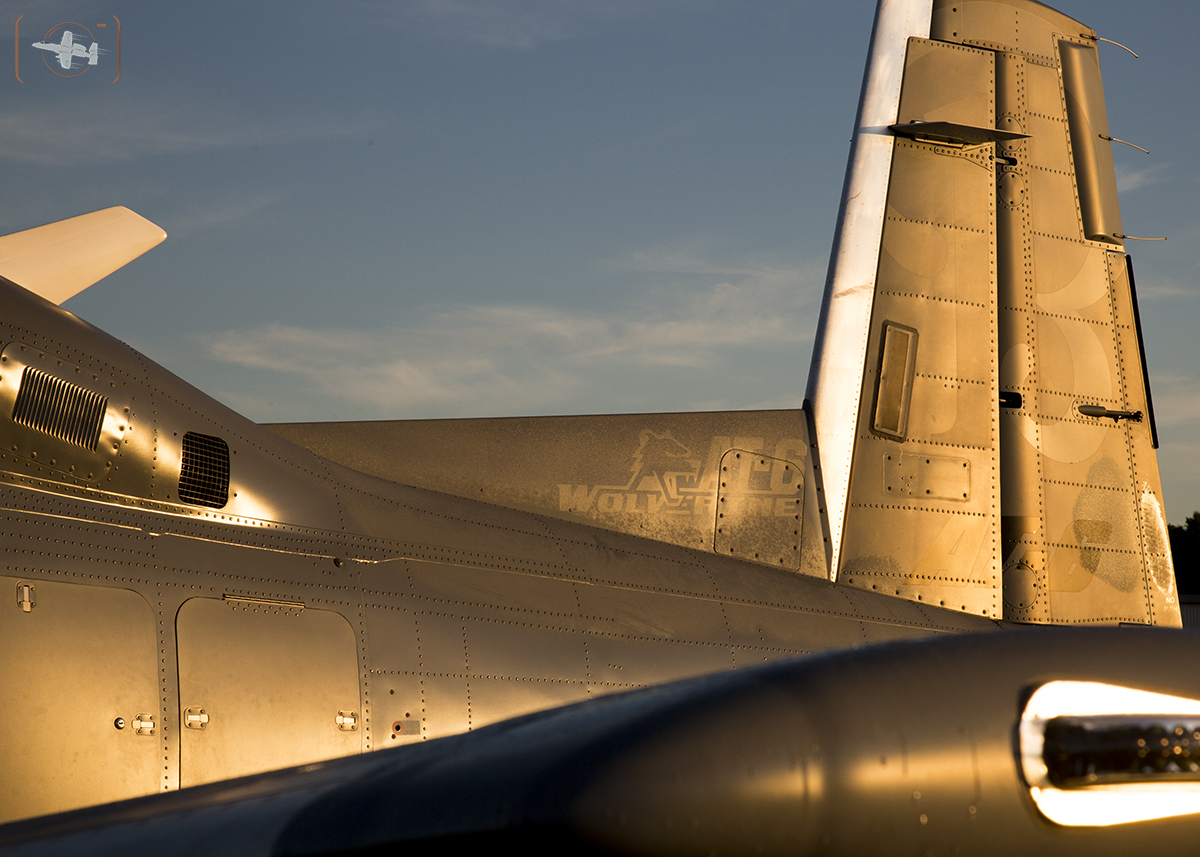
AT-6E Reflecting Morning Light-Attack.
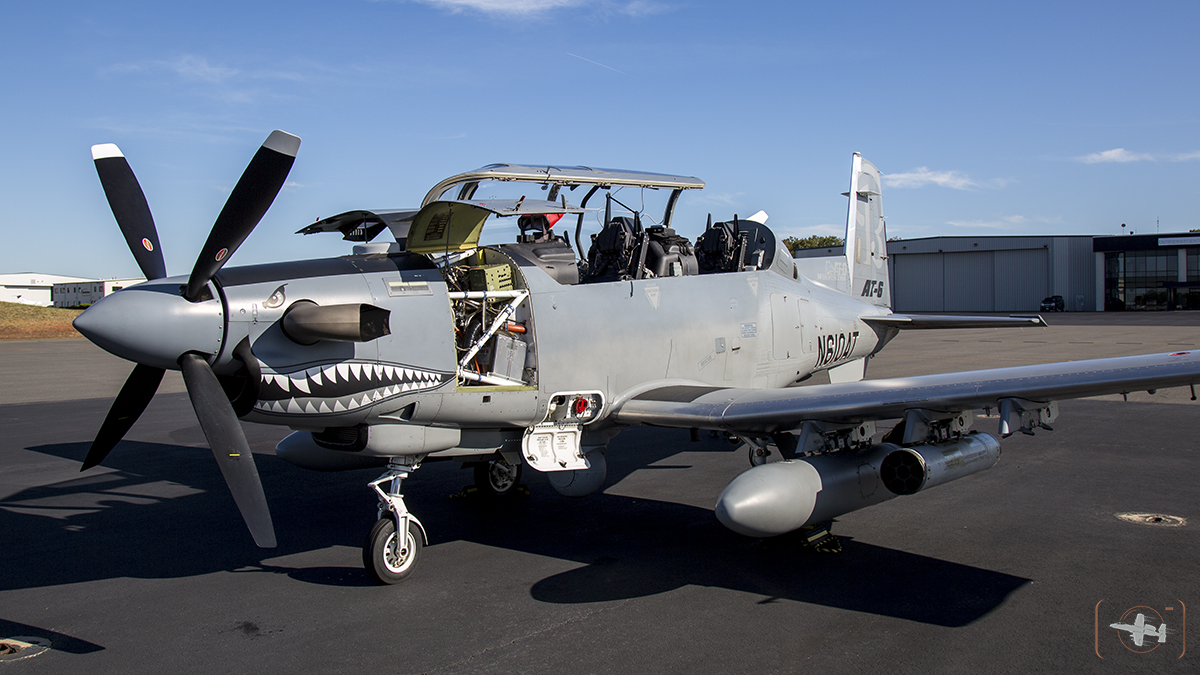
Textron’s AT-6E Wolverine exemplifies straightforward pre-flight preparation easily handled in field by a couple sets of hands.
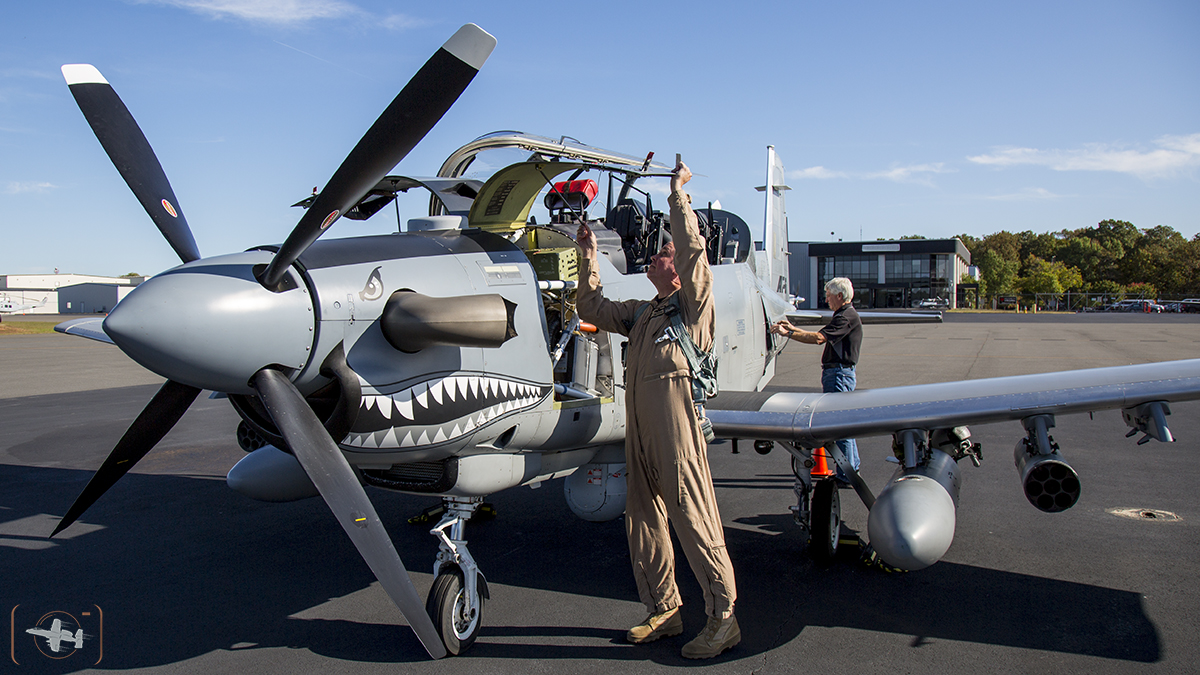
USAF Col. Tom “Gumby” Webster (Ret.) and ground crew wrap up pre-flight checks on Textron Aviation Defense – Beechcraft AT-6E Wolverine.
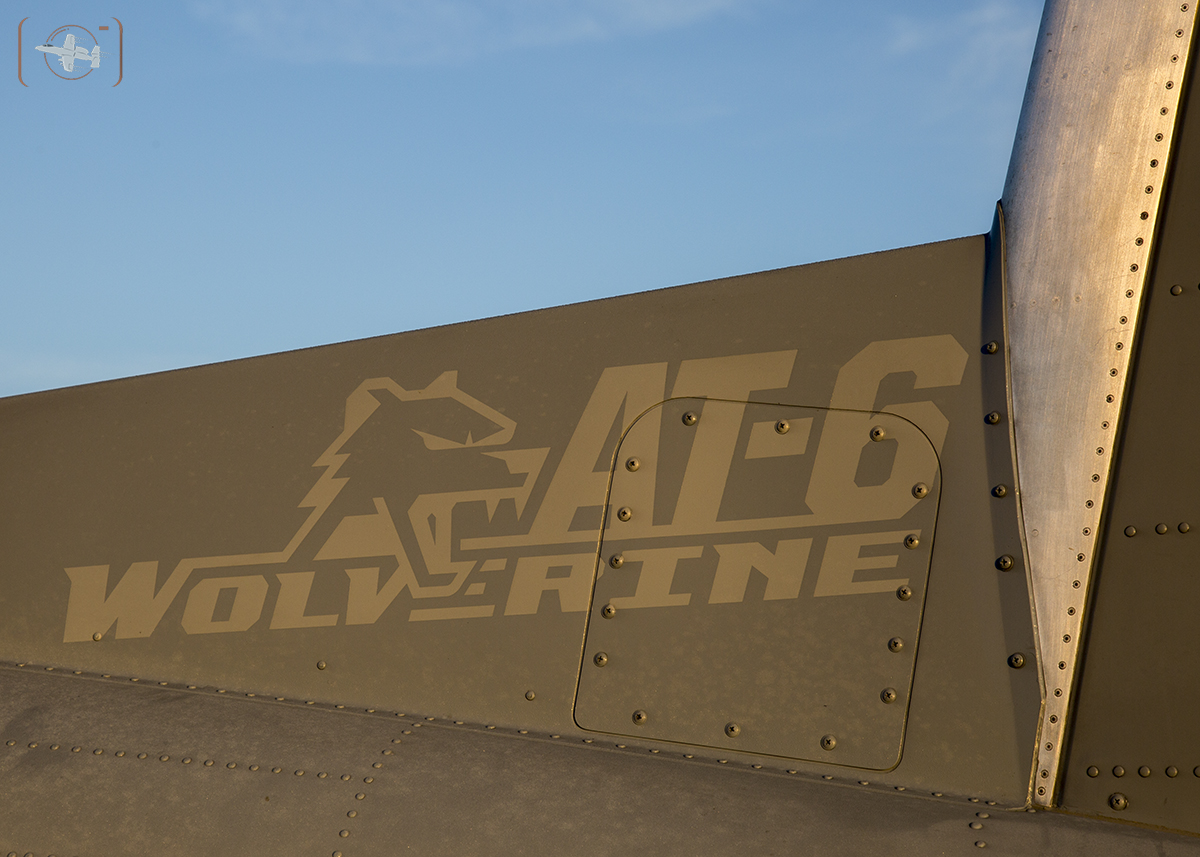
AT-6E Wolverine Tattoo
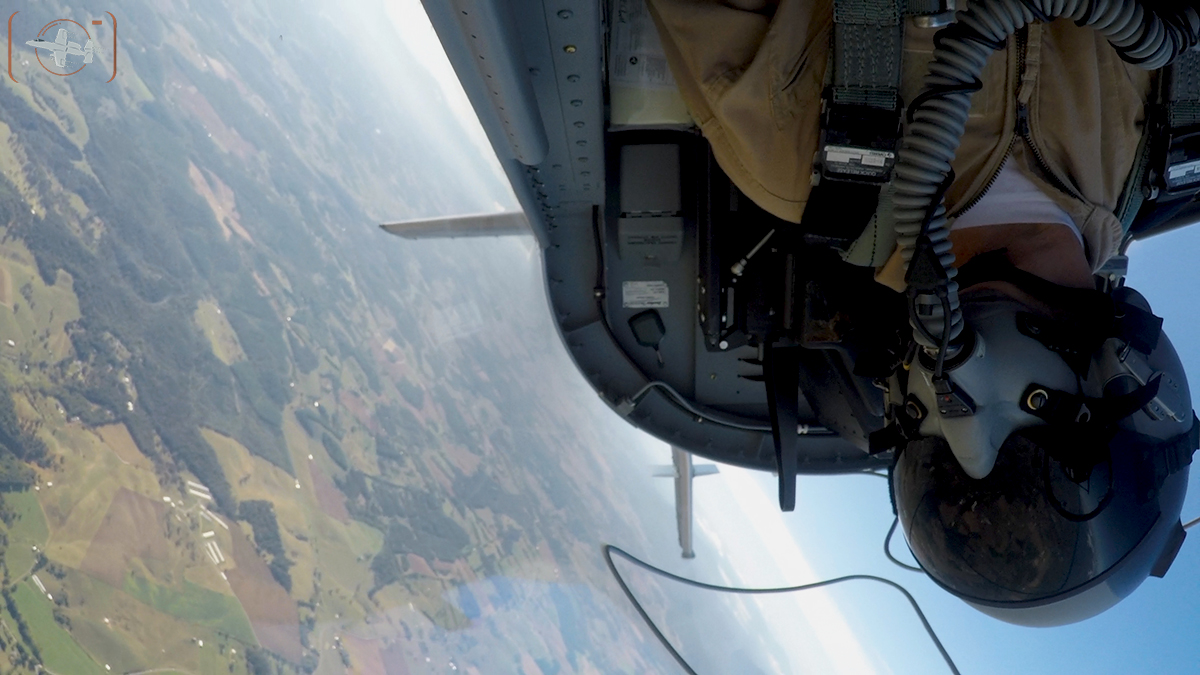
Textron – Beechcraft AT-6E Wolverine Rolling in on a simulated attack. Survellience COIN/CAS/ISR/Precision attack.
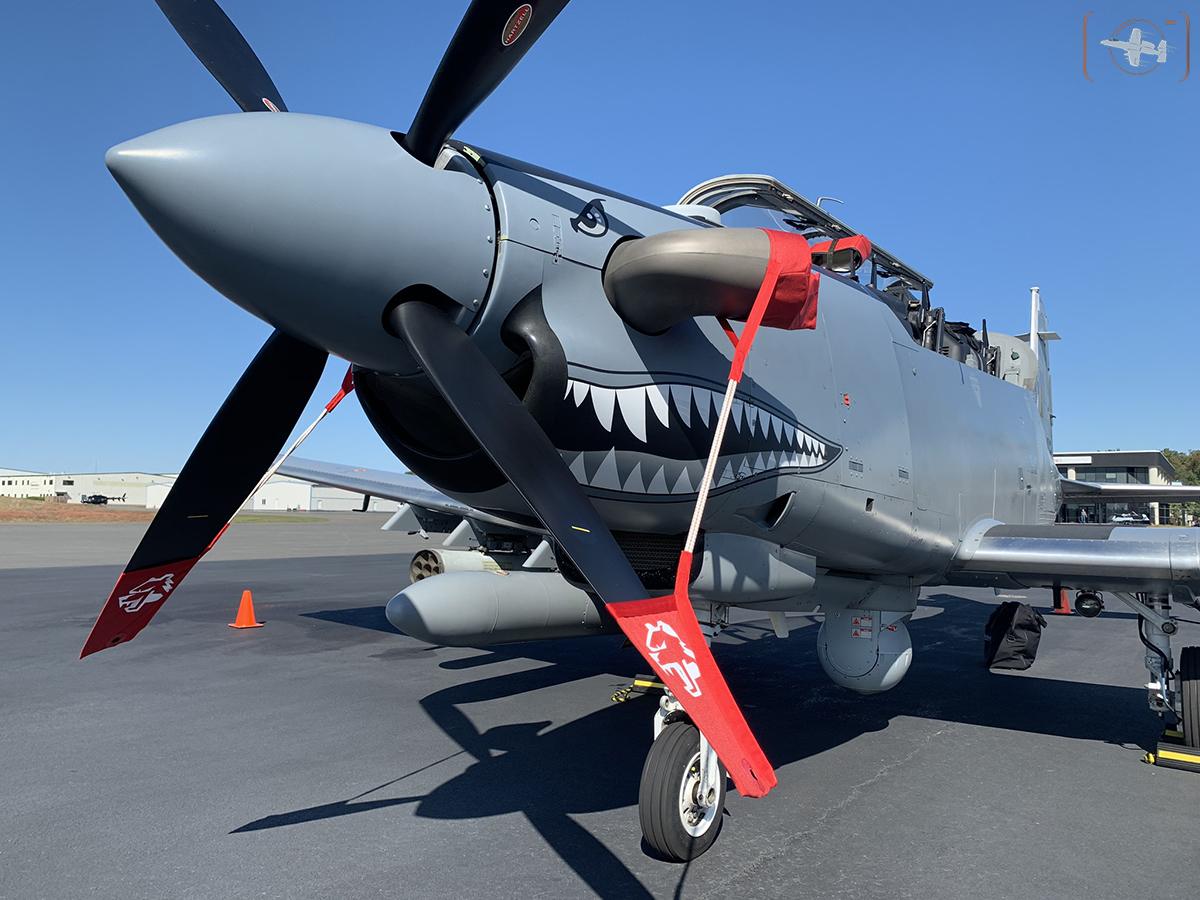
Textron Aviation Defense Beechcraft AT-6E Wolverine waits on ramp with anticpation.
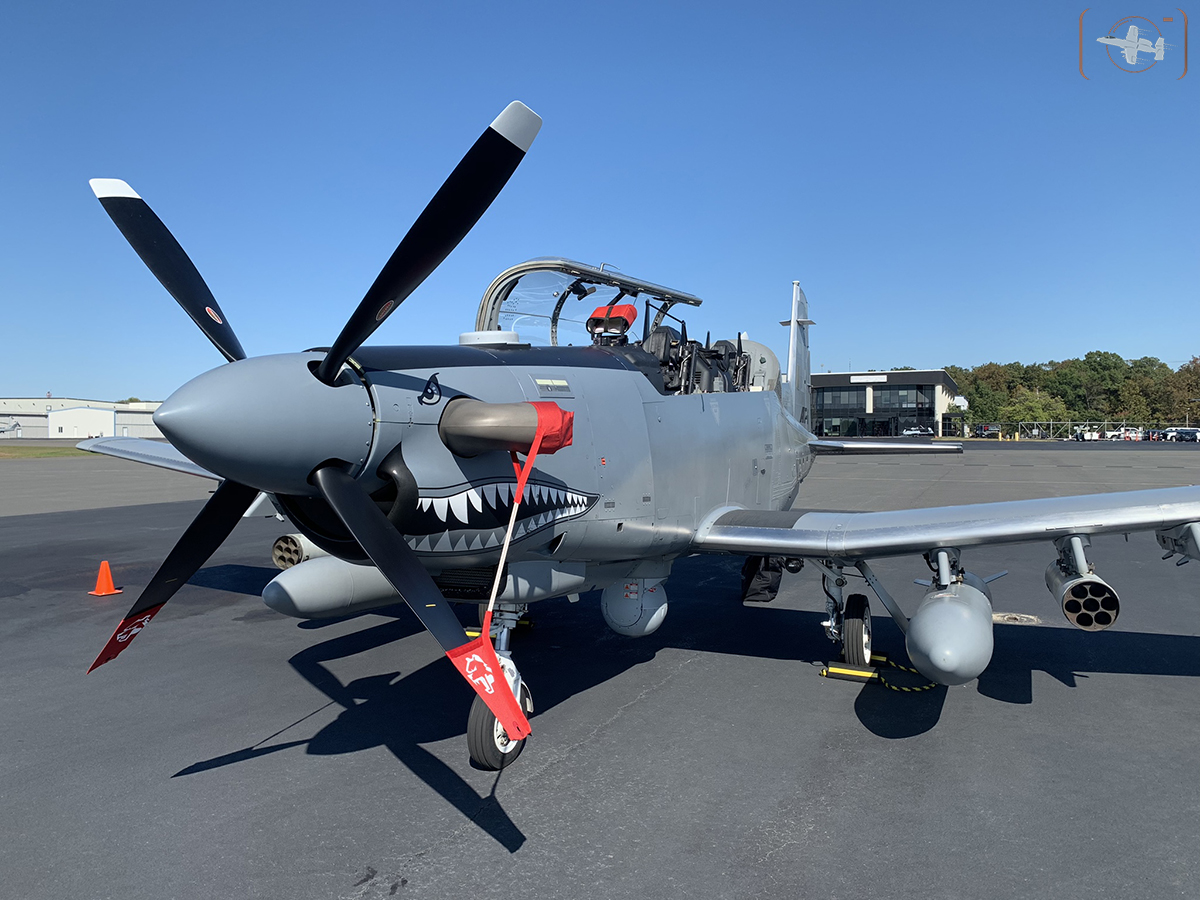
Textron Aviation Defense Beechcraft AT-6 Wolverine showing some morning attitude prior to simulated COIN Mission
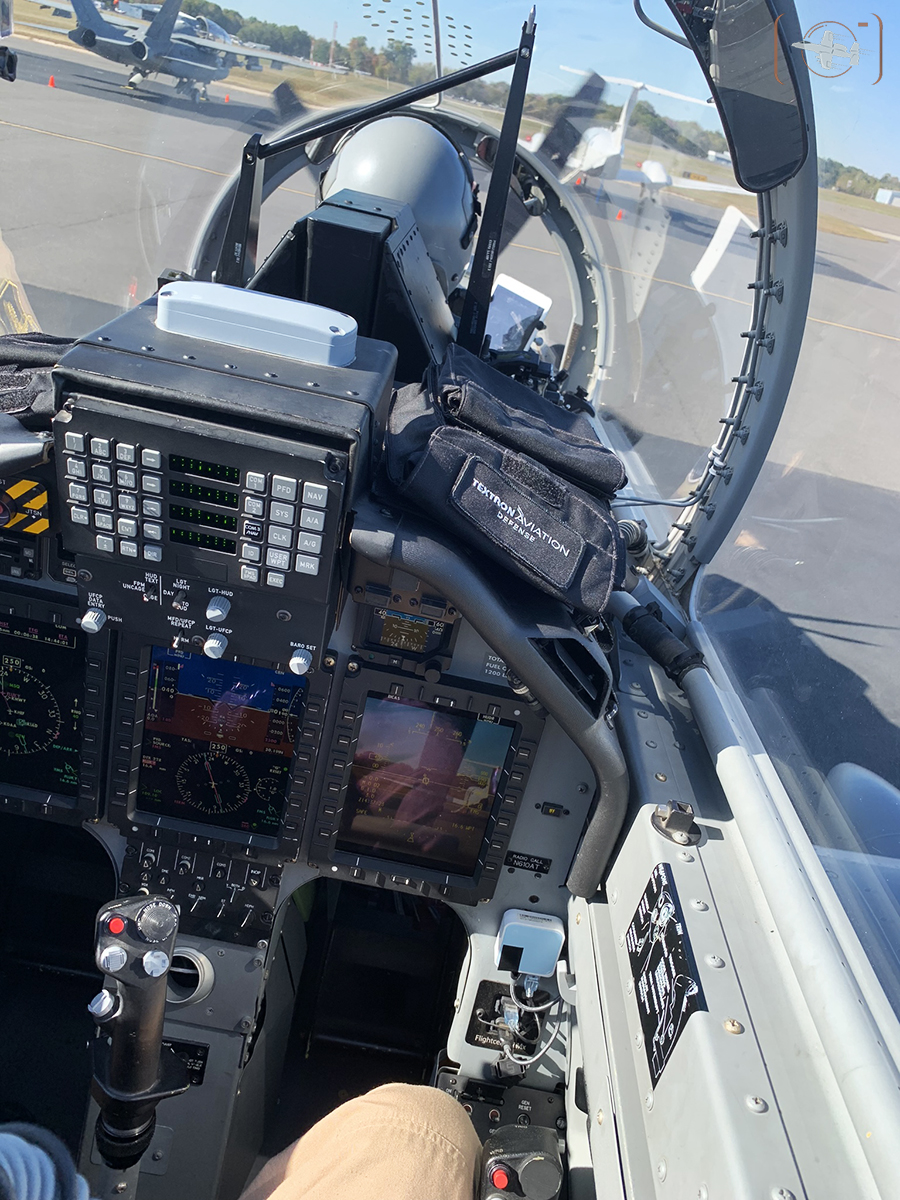
Textron AT-6 Wolverine engine run and systems checks prior to launch on ISR/COIN/Precision Attack Mission
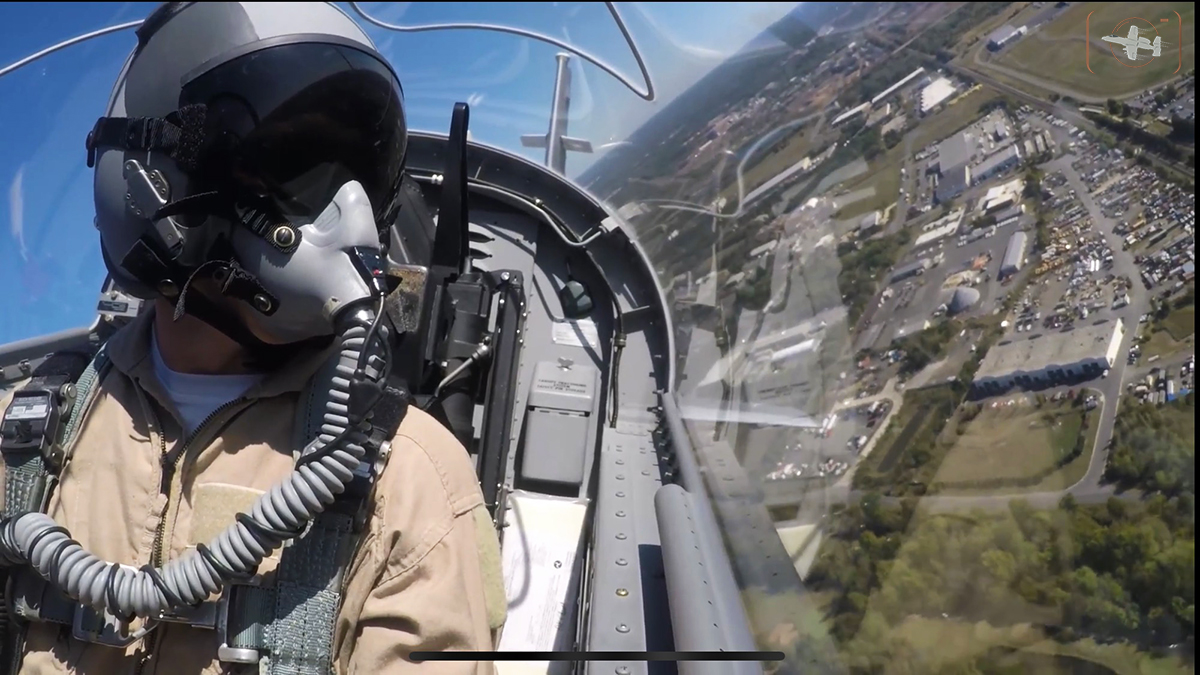
Banking after take off in the Textron Beechcraft AT-6E Wolverine with an unparalleled vantage point.
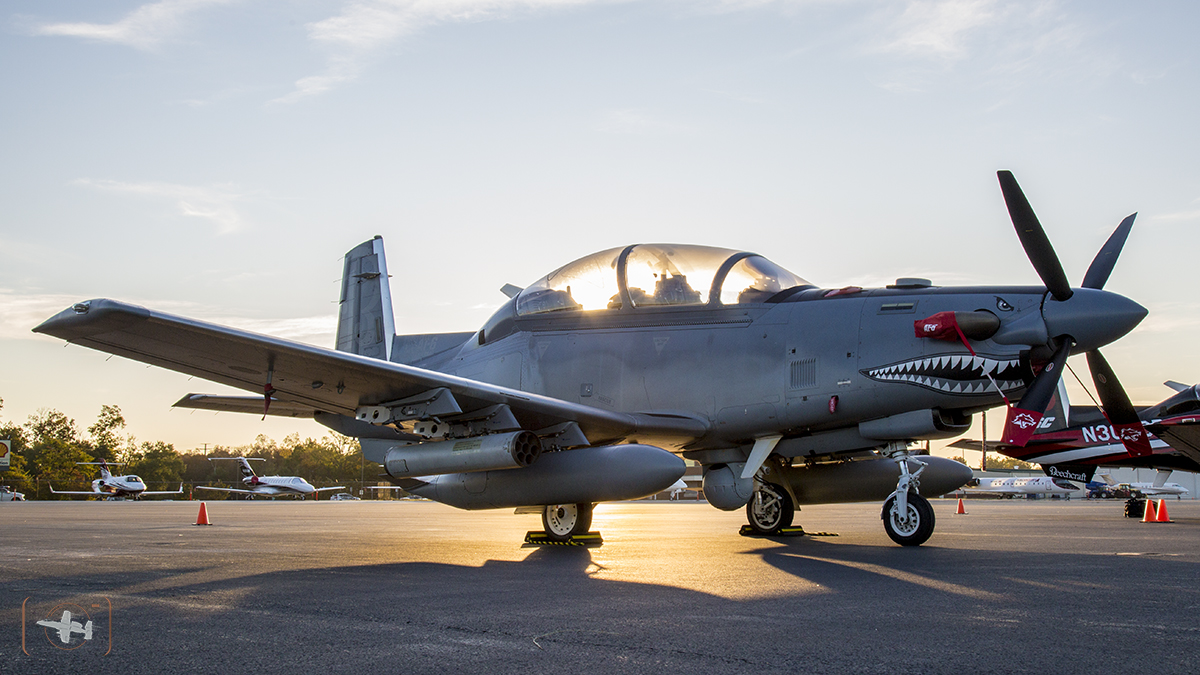
Textron Beechcraft AT-6E Wolverine glows in the early morning light – at the ready for ISR/COIN/FAC/CAS.
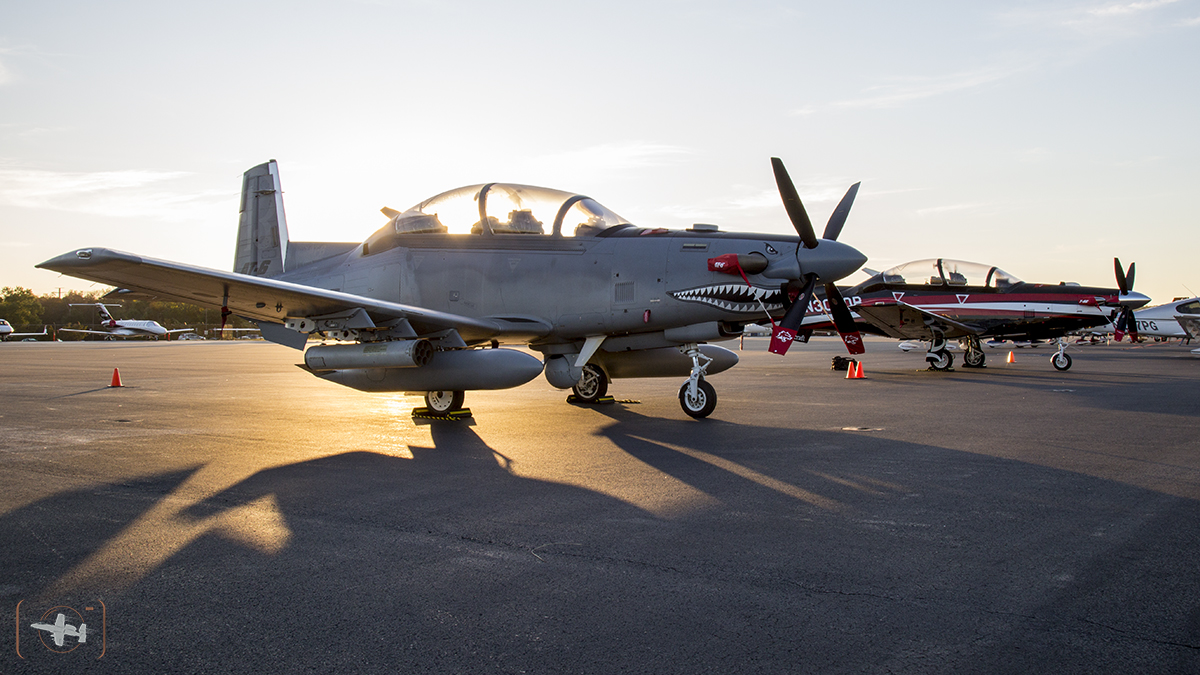
Textron Aviation Defense AT-6E Wolverine sits alongside the T-6A Texan II Trainer utilized by the USAF and numerous other nations.
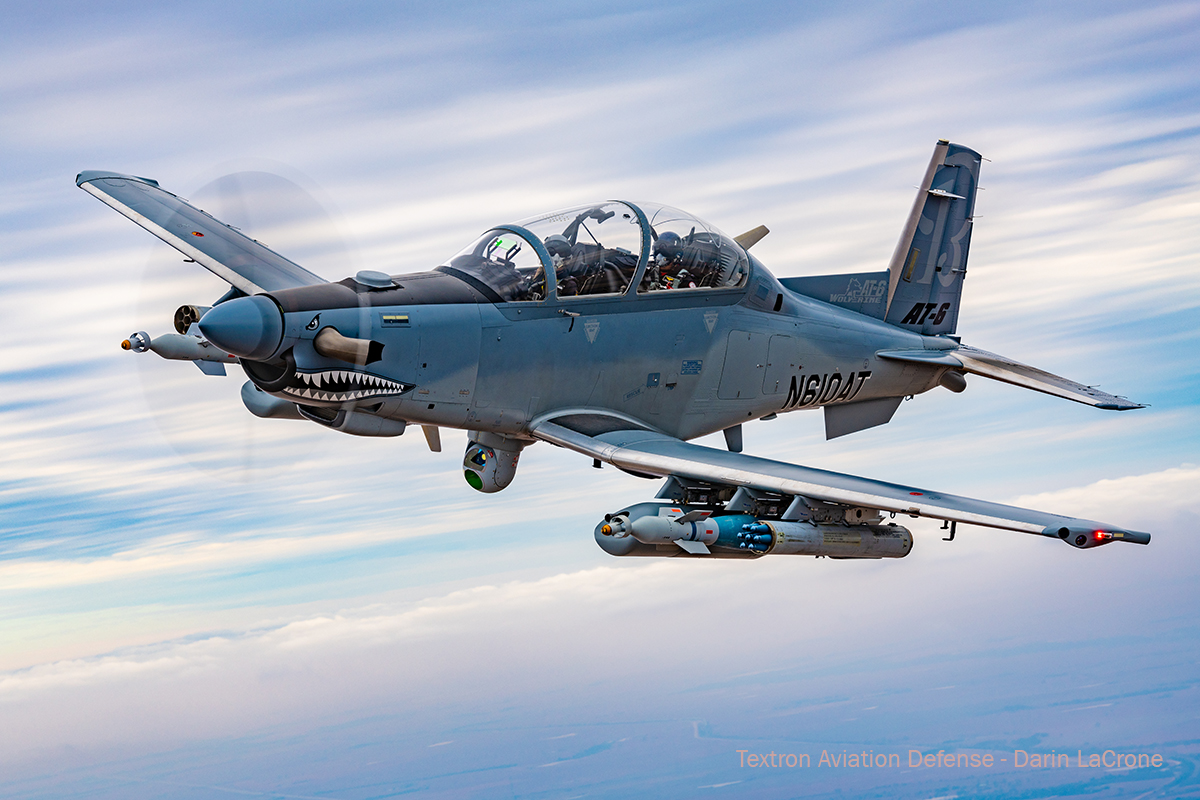
Textron AT-6E flying ISR/COIN while configured with MX-15, Guns, Paveway & Rockets.
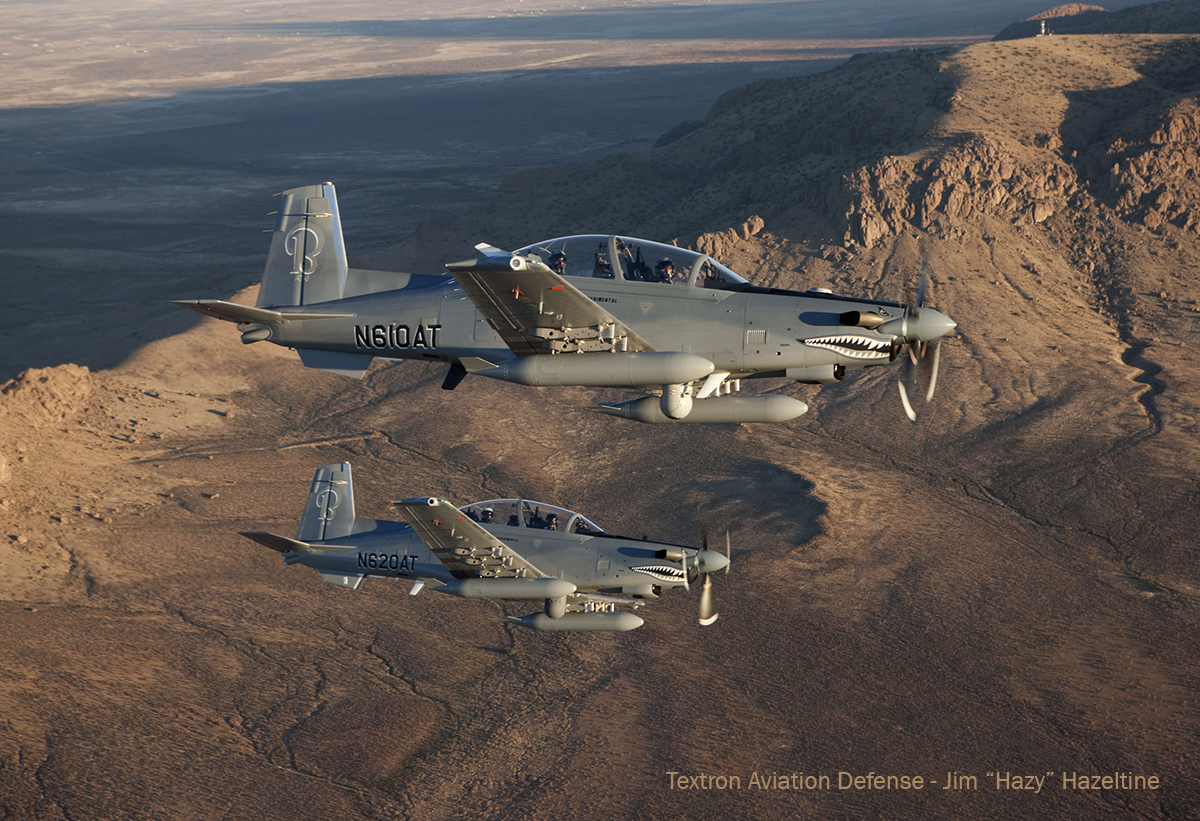
A pair of AT-6Es armed and operational in an austere location
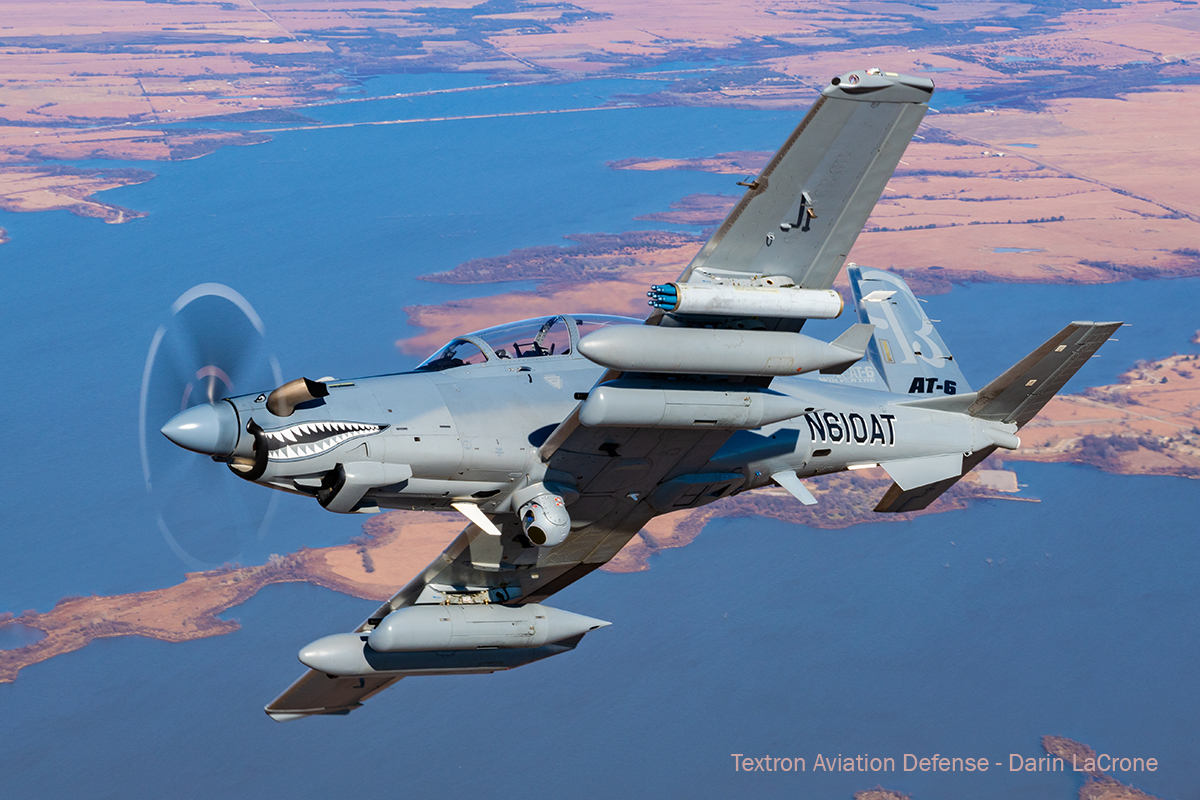
Textron AT-6E Wolverine flies with NX-15, guns, 2.75″ rockets & fuel.
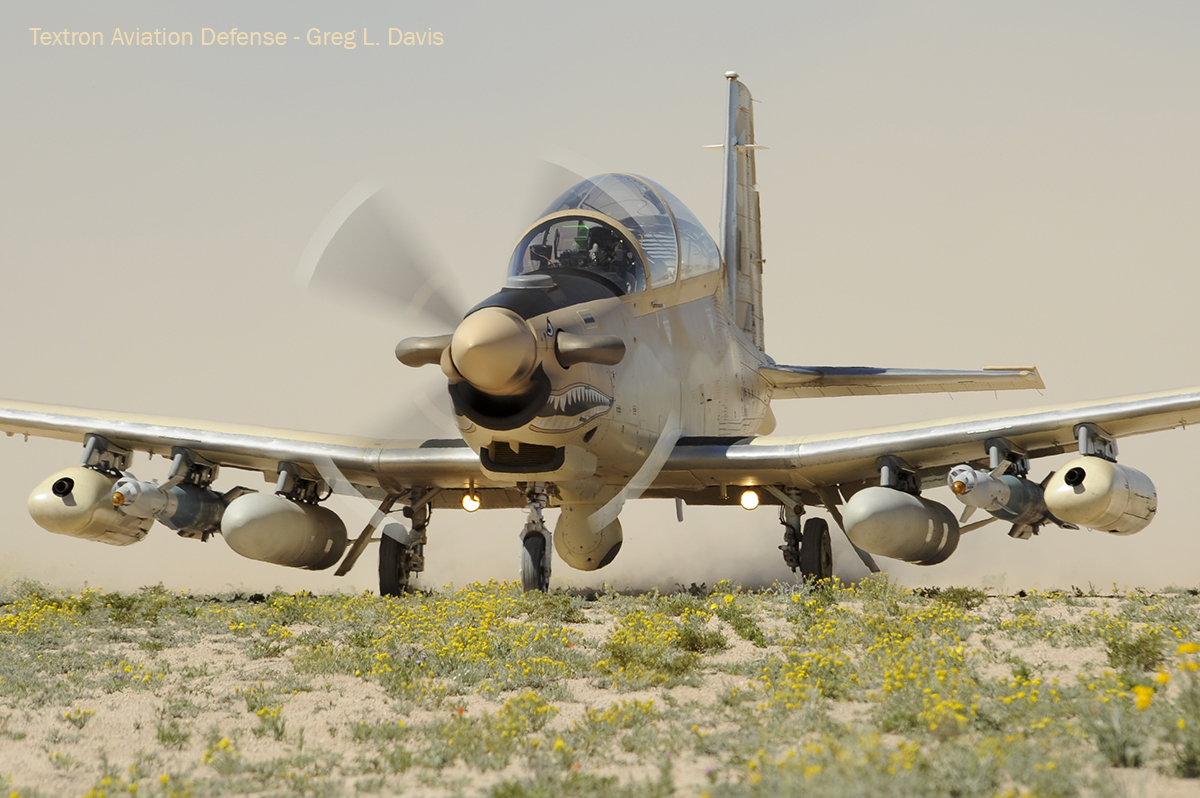
A Beechcraft AT-6E Wolverine turboprop conducts austere runway operations from the Ft. Stockton-Pecos County Airport on March 31, 2020. The deployment of the ISR/Precision Attack aircraft, which wears an appropriate desert camouflage paint-scheme, demonstrated aircraft performance at a desert airfield with a field elevation of 3,011 ft. MSL. The six-person team from Textron Aviation Defense conducted deployed operations in seasonal temperatures and across an array of weights and aircraft configurations. (Textron Aviation Defense photo/Greg L. Davis)
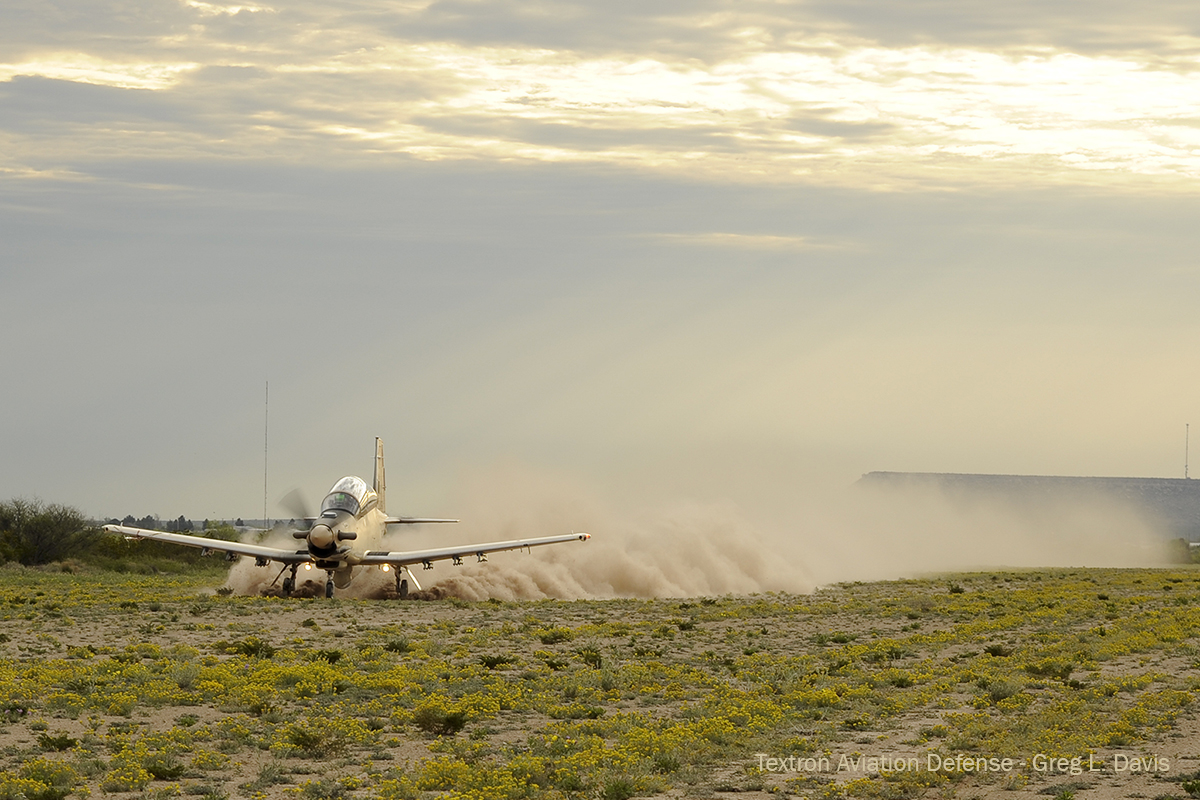
A Beechcraft AT-6 Wolverine turboprop conducts austere runway operations from the Ft. Stockton-Pecos County Airport on April, 2020. The deployment of the aircraft, which wears an appropriate desert camouflage paint-scheme, demonstrated aircraft performance at a desert airfield with a field elevation of 3,011 ft. MSL. The six-person team from Textron Aviation Defense conducted deployed operations in seasonal temperatures and across an array of weights and aircraft configurations. (Textron Aviation Defense photo/Greg L. Davis)
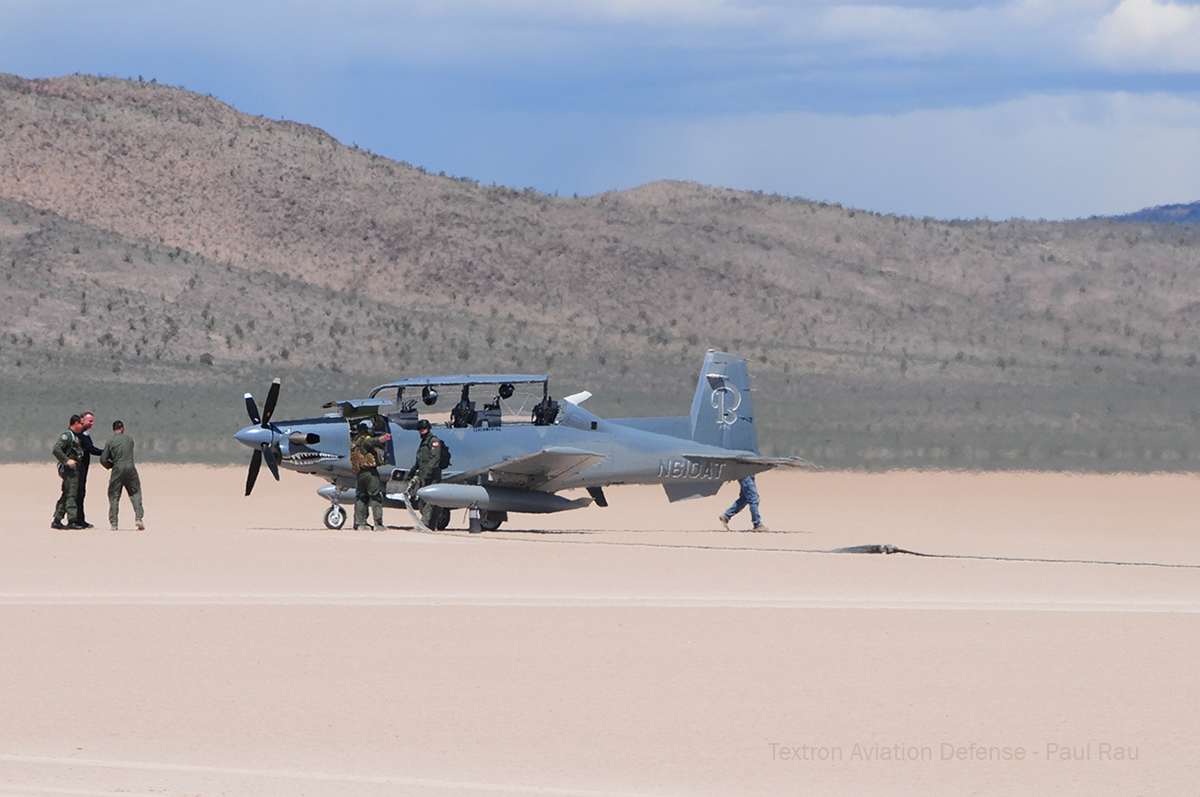
Textron’s AT-6E refueling and rearming at a Forward Arming and Refueling Point (FARP).


